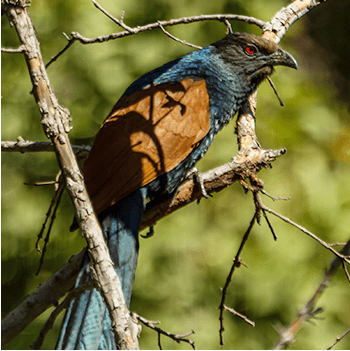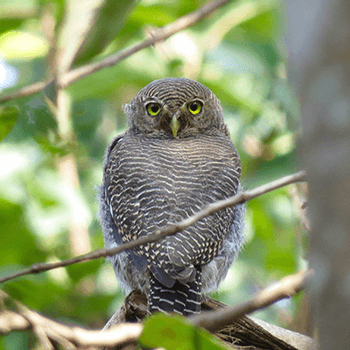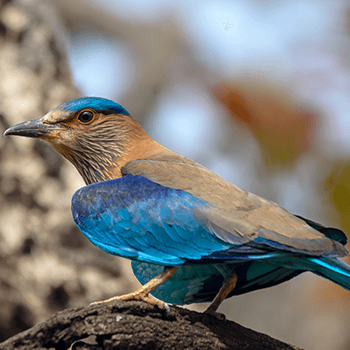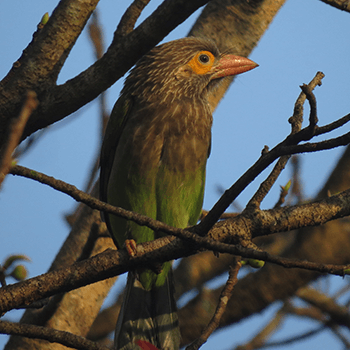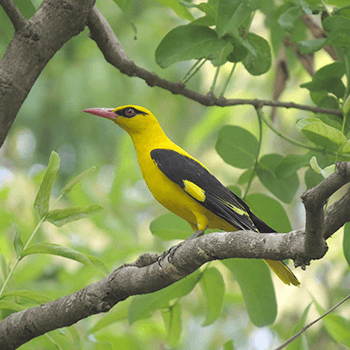Wake up at five and meet with your naturalist at the terrace of the main building for a cup of morning tea/coffee and some lazy birding. The means may be lazy but the setting of the terrace can be perfect for viewing from specials like the Greater Racket-tailed Drongo, Lesser Golden Backed Woodpecker, Brown-headed Barbets, White-naped Woodpeckers, Black-naped Monarch Flycatcher and the vociferous Jungle Babblers who you would’ve heard right from the time of waking up.
Once all charged up, we pick up our packed breakfasts and head out for a long walk that crosses the lodge grounds heading towards the Tannaur. This patch is all woodland where we will be looking for specials like the Spangled Drongos, the Shikra (a small hawk), the Common Hawk Cuckoo or the brain fever bird, a few lapwings in the grassland patches, Large Grey Babblers, Pygmy Woodpeckers, Tree Pipits, Grey Hornbills and many such hidden treasures that dot the woodland and low bushes interspersed in between. On meeting the Tannaur, we reach a patch of scrub, which is interestingly one of the best places to see the White-browed Bulbul, small populations of which were recently recorded in Central India. After this we walk along the banks crossing small riverine islands that are home to egrets, sandpipers, herons, wagtails, ibis and plovers, a forest department nursery with special flycatchers like the grey-headed canary, spotted fantail and if we are lucky, the majestic Indian Paradise Flycatcher too and finally, we reach a bund built by the local village authorities to hold the river flow and ensure water availability through the year. The reeds here provide ideal cover for our target birds, the two Bittern species, Cinnamon and Black, the sightings of which are very sporadic owing to the scale of the habitat and the small population of these birds here. We will stop here for breakfast on the banks of the deep water bund and take in the flocks of cormorants, kingfishers and if we are lucky, maybe even a Grey-headed Fish Eagle could come and perch on the dead trees that line the river bed. After breakfast, we start walking back through the fallow fields, a habitat of dry scrub and open spaces, looking for partridges, soaring eagles and well camouflaged pipits, chats and larks.


